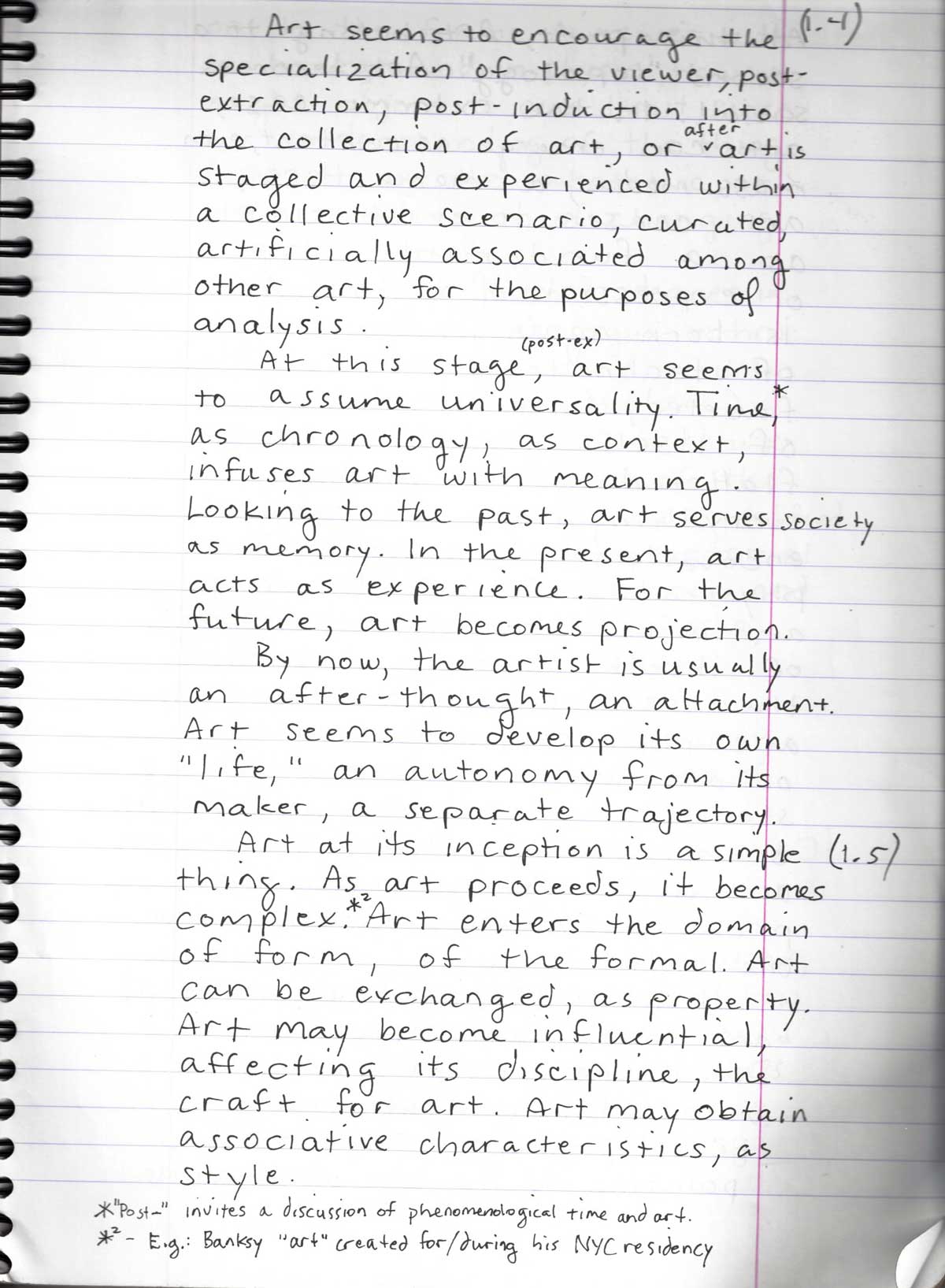[1.4]
Art seems to encourage the specialization of the viewer, post-extraction, post-induction into the collection of art, or after art is staged and experienced within a collective scenario, curated, artificially associated among other art pieces (assembled), for the purposes of analysis.
At this stage (post-extraction, or post-ex-) art seems to assume universality. Time,* as chronology, as context, infuses art with meaning. Looking to the past, art serves society as memory. In the present, art acts as experience. For the future, art becomes projection. All at once, art is dimensional.
By now, the artist is usually an after-thought, an attachment. Art seems to develop its own life, an autonomy from its maker, a separate trajectory.
[1.5]
Art at its inception is a simple thing. As art proceeds, it becomes complex.** Art enters the domains of form, of the formal. Art can be exchanged, as property. Art may become influential, affecting its discipline, the craft for art. Art may obtain associative characteristics, as style.
